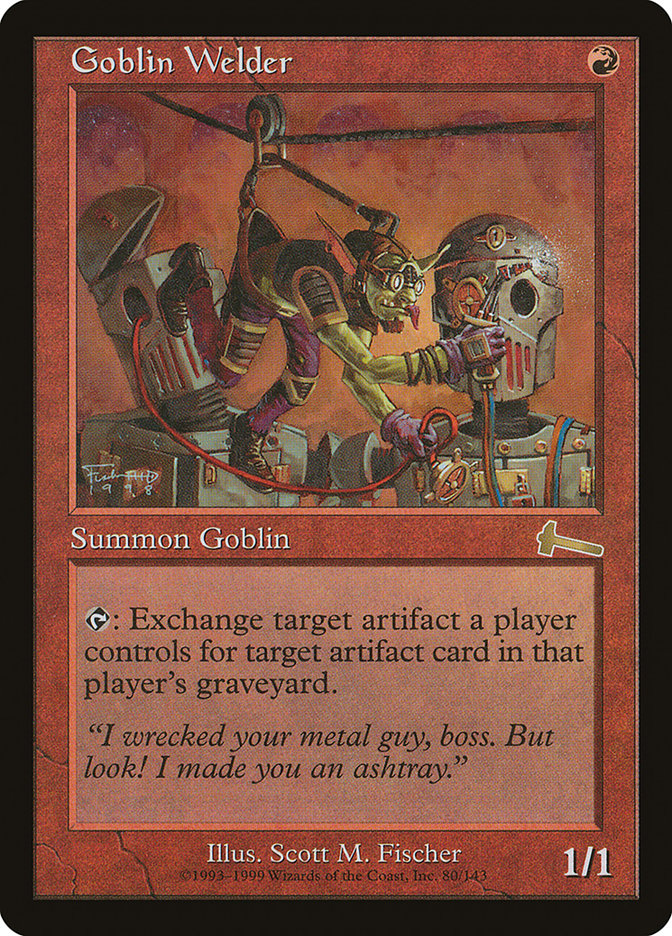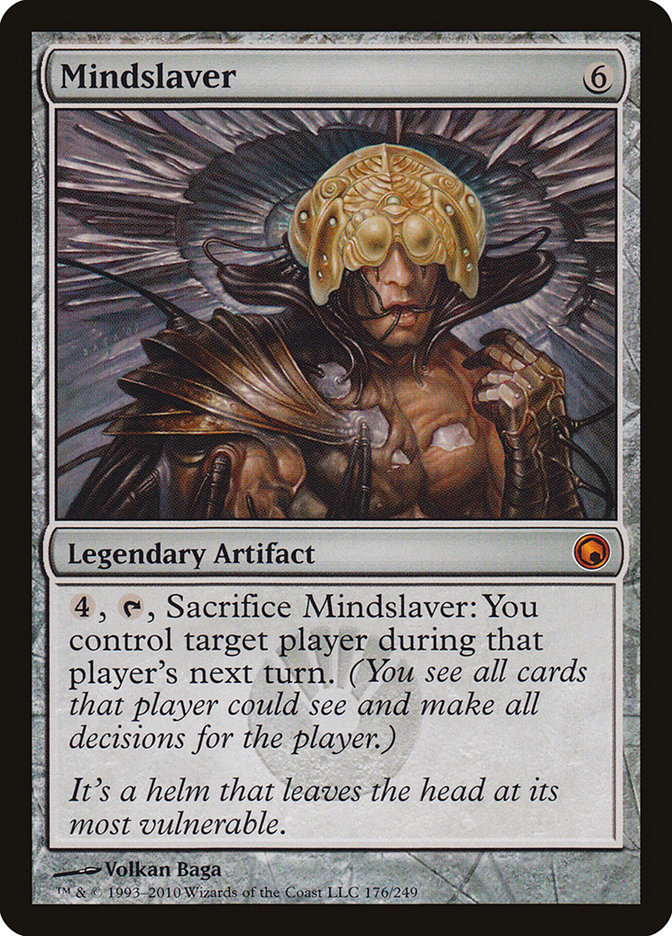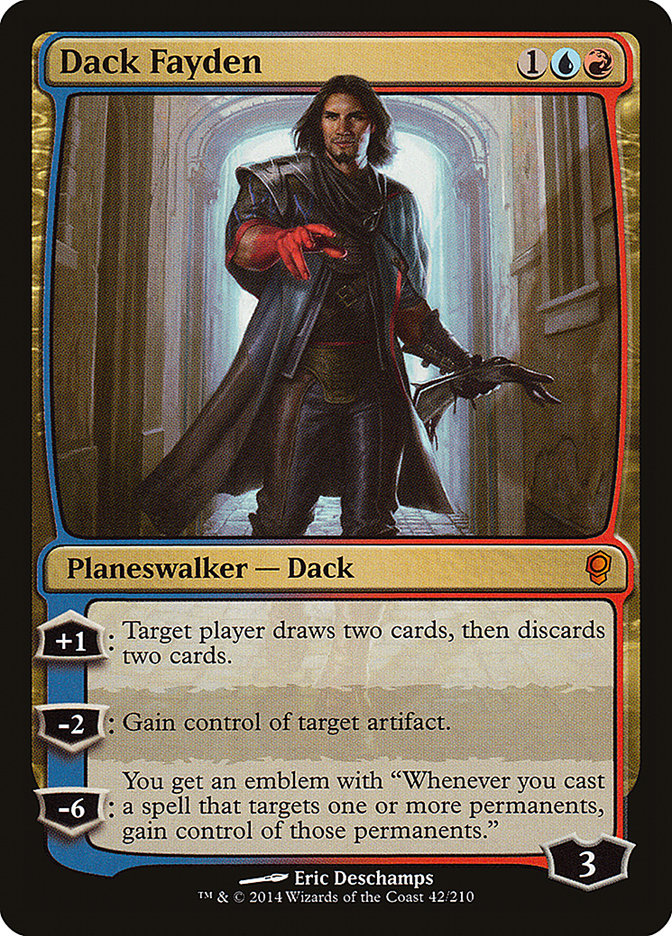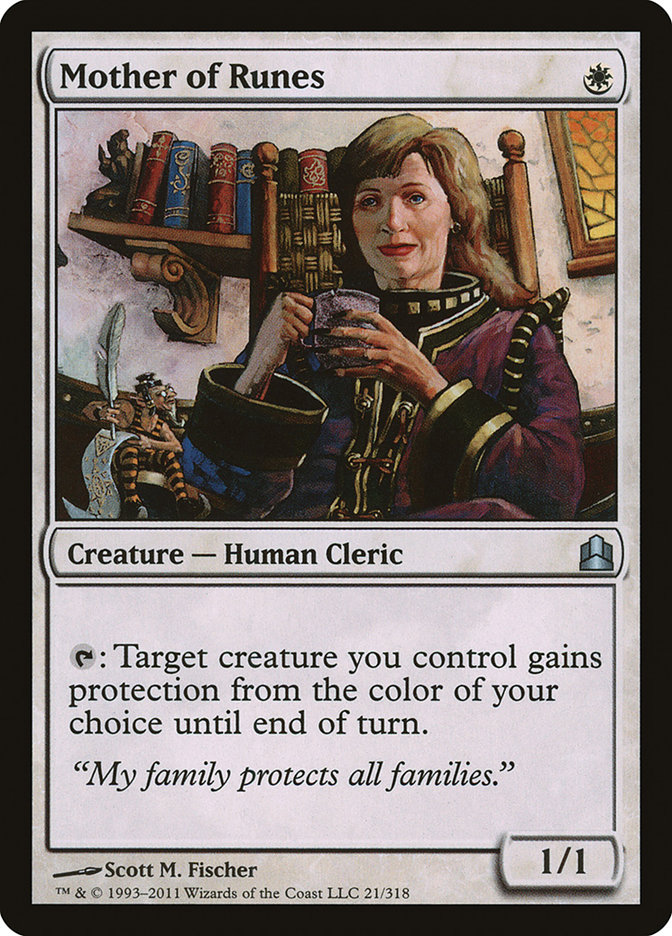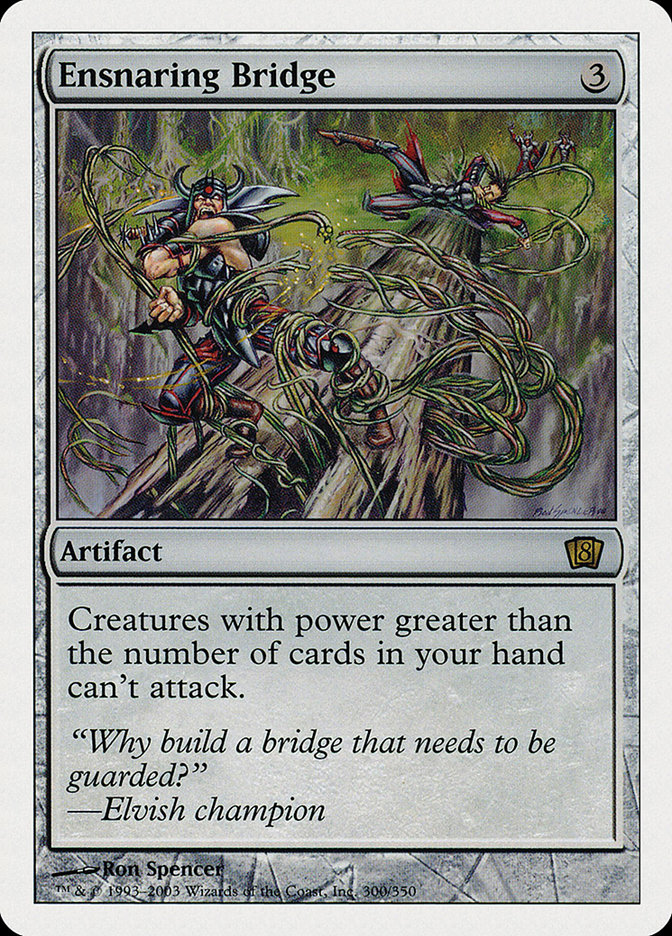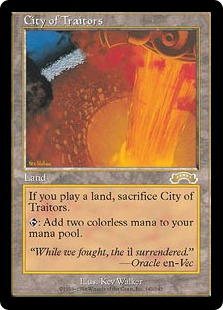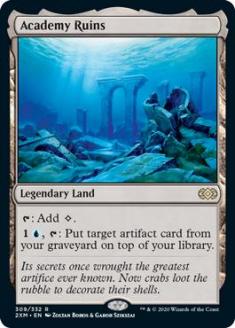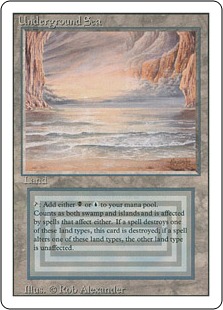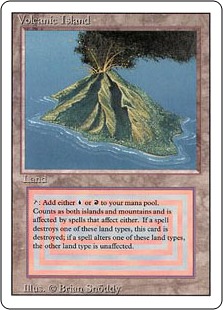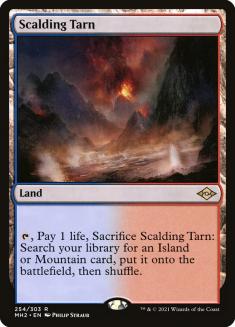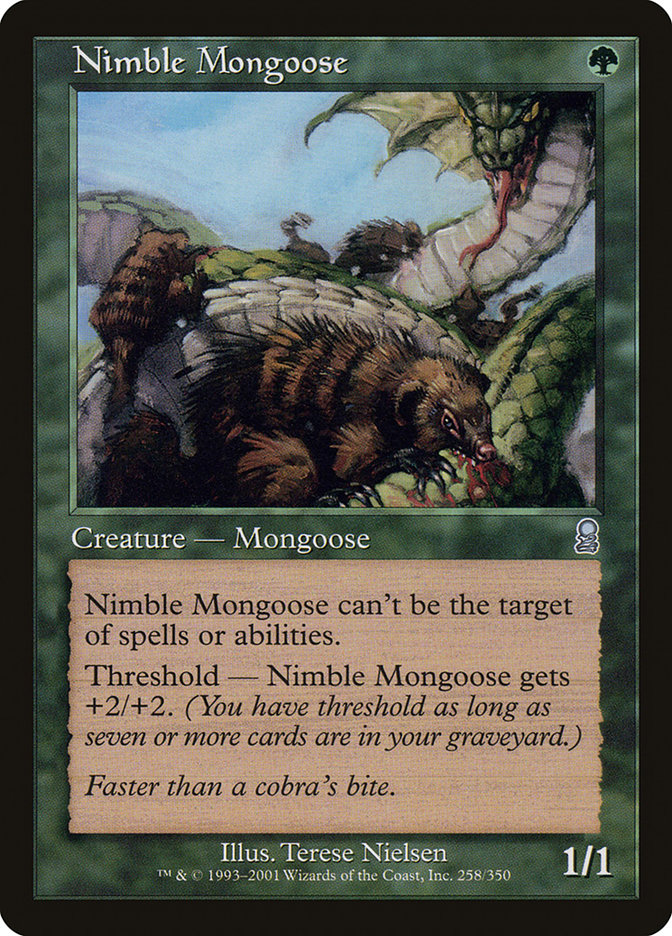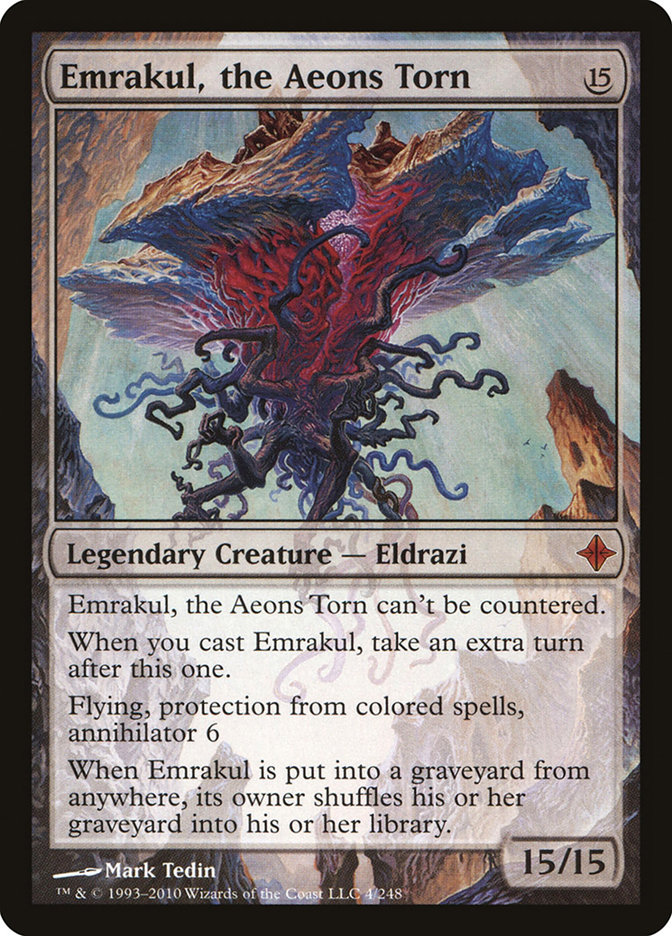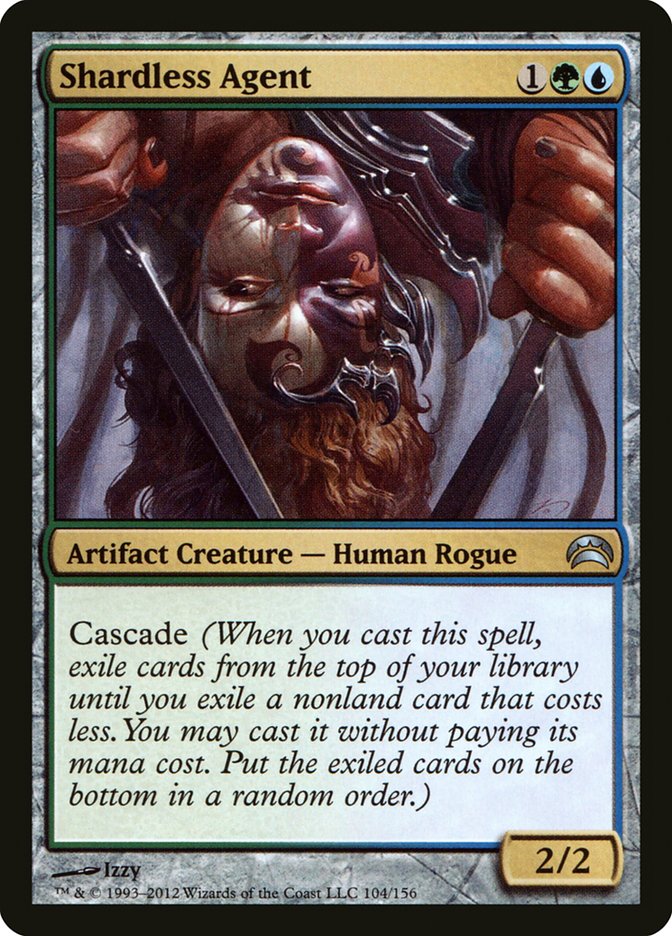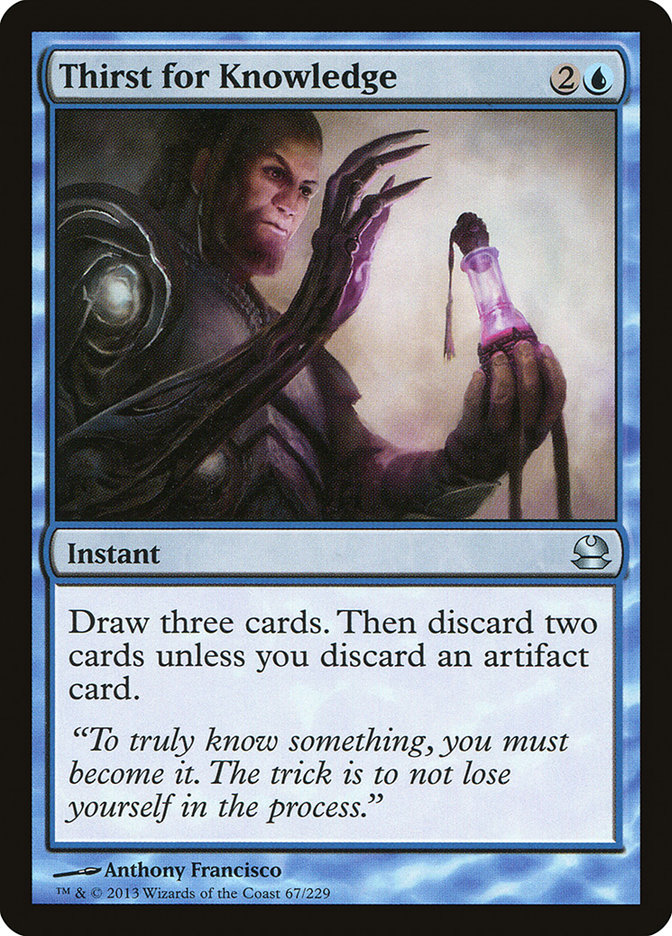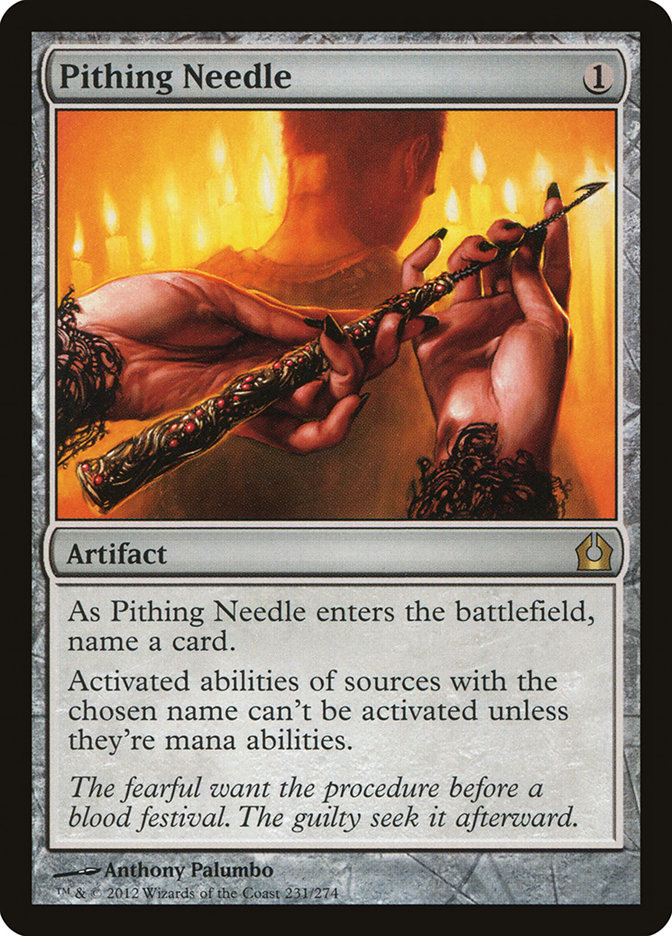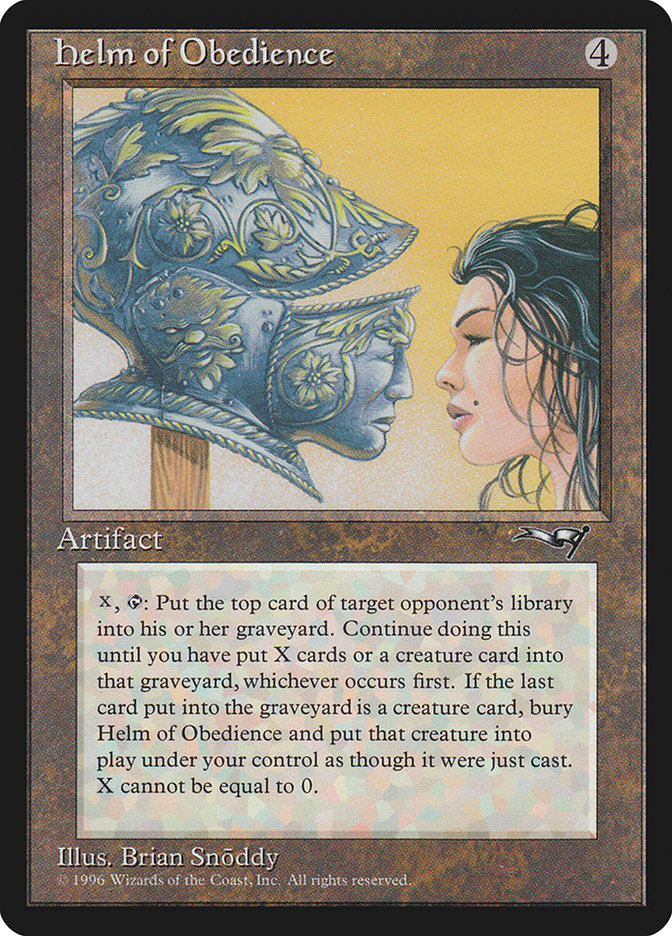Hello everybody! Welcome back for the fourth installment of You Choose The Brew! Last time we saw your two champions – Control Slaver and Bomberman – face
off against Deathblade to get their pressure testing and general check-up of inner coherence. Control Slaver stood up better in that test, and
consequently, that was what you chose for me to continue to work on. So today you’ll be watching our sweet brew getting ready to leave the nest for the
competitive arena. So relax, grab some popcorn, and enjoy the show.
Oh, for those of you who’ve only recently joined in, here are the previous installments (Ep I ;Ep II ; Ep III), and here’s how our contender looked at the end of the
last installment:
Creatures (10)
Planeswalkers (3)
Lands (20)
Spells (27)

The Process
So if the last step was checking if the internal synergies of the deck were up to snuff by running it against something interactive that wouldn’t pressure
one particular angle too much, what’s next? Well, running a gauntlet obviously!
I’ve already written an article about my philosophy concerning gauntlet construction way back in 2011, however,
that type of gauntlet was meant for a different purpose. It’s meant for “finished” testing, that is too say, learning how to play an established deck
against most of the expected opposition or giving a deck you’ve already developed its final polish.
What we’re aiming to do with Slaver is different; we want to find its weak spots and learn some of the less obvious tricks the deck can provide to get it
to a point where we (I) would be comfortable taking it to a local event to start getting some actual tournament experience with it in order to move from
brewing to actually playing. As such, instead of trying to see as many strategies in action as possible – as I advocated in the gauntlet article – my main
goal in this run is to cover the main pressure points other decks are likely to attack. Here’s a short list:
– Multiple on-curve creature drops
– Singleton high pressure threats
– Mana denial
– Lots of countermagic
– Getting combo killed early
– Non-creature permanent threats
– Flexible answers to our own permanents
– Overwhelming lategame
To cover these when brewing, I generally simply draw from the pool of commonly played decks and pick a collection of foes that I feel should reasonably
attack from at least one of these angles in such a way that all of them have been covered in the end. The decks I’ve chosen this time around are:
– Death and Taxes: a ton of creatures, mana denial, and a ton of different annoying interactions.
– RUG Delver: More mana denial, but more importantly, countermagic en masse and a clock of fast and lethal standalone threats.
– Sneak and Show: A fast resilient combo deck. Defend or die, essentially.
– Shardless BUG: Abrupt Decay, Jace, Liliana, and overwhelming card advantage.
Now if I was going to test a deck for the next Open Series weekend, that isn’t the gauntlet I would necessarily pick. However, at this point the process
isn’t meant to be complete or tell me anything specific about the deck’s matchups – other than that you don’t have a bunch of utterly unwinnable matchups,
hopefully. Instead, what I want is a general impression of what the deck can deal with, how it does so, and what it folds to. We want to find where its
strengths and weaknesses lie and how it handles different kinds of situations.
The important thing to remember is that this process – for me at least – isn’t scientific in nature. The reason to play these games is to give my intuition
and experience something to work with, to, as you might say, get a feel for the deck and how it handles. This information, or rather these impressions, are
what allows me to develop gameplans, judge situations on the fly, and really grok the deck. It also allows me to start tuning the deck by getting
rid of cards that seem to hurt more than they help, fixing minor weaknesses that I overlooked before, and any other kinds of little tweaks – and build a
tentative sideboard mainly through theorycrafting and going with my gut.
Don’t get me wrong, that won’t give you a tuned deck, and the sideboard especially is likely going to be rather lackluster given that it hasn’t seen any
play at that point, but it will give you something that should at least deliver reasonable games and manage to hold its own. Which is exactly where you
want to get your brew to start in depth testing and tuning, be it through playtesting, playing low scale events, or just rocking it in something large
because you feel like it.
Sometimes you don’t get there (I suspect most of us know that part), and sometimes you just hit the right thing at the right time (Caleb Durward’s U/G
Survival of the Fittest in its breakout Legacy GP performance still feels like that to me). This part of the brewing phase isn’t the final step in the
deck’s development. It’s likely to take a while from that point to get to a finely-tuned killing machine. It can take anywhere from a week to years,
depending on how much time you invest and how many other players pick up the deck so you can pool knowledge. Lots of factors dictate the length of the
process. It is, however, the last step of the brewing process. Think of it as a graduation, if you want, before the deck needs to be thrown out into the
wide world of actual play to thrive or shrivel according to its merits.
Alright, so much for the mission statement. Last time I gave you comprehensive summaries of how all the games I played turned out. That won’t be possible
this time not only due to the volume of games involved but also because the games themselves aren’t what matters. The overall impressions are what matters.
So those are what I’m going to give you, essentially my mental notes and conclusions after each testing run.
Sparring Partner One: Death and Taxes
The first thing I realized was how annoying it was to draw the three colorless lands – Academy Ruins, City of Traitors and Ancient Tomb. Their benefits
nearly never came up; it was definitely an issue. I actually ended up hating those lands so much that I cut them straight up after this round simply to add
more colored sources (see change notes at the end of this “chapter”).
Thoughtseize was expectedly lackluster. I don’t think targeted discard is particularly good against Death and Taxes in general as they have very few actual
key pieces, but it shined a couple of times and felt solid enough given the role I added it for last time (more interaction with the opponent’s gameplan).
As for defense, Baleful Strix was surprisingly bad at keeping the attacks at bay between Thalia, Guardian of Thraben’s first strike and Umezawa’s Jitte,
but sometimes it served nicely to draw out a Swords to Plowshares to clear the way for Goblin Welder. In the end, all of the games–aside from one in which
a turn 3 Wurmcoil Engine took it home–came down to one simple question: can I get Ensnaring Bridge down? Once I did, it usually proved pretty easy to
follow up with Dack Fayden or Sensei’s Divining Top. I would then stay low on cards until I took over the game. If I didn’t, I generally succumbed to the
beatdown. This likely spells trouble for the postboard games and against decks with maindeck artifact removal, something to keep in mind when making a
sideboard.
Since I just mentioned Sensei’s Divining Top, let me say this: I was basically always happy to see that card. It has so much synergy with Dack’s Faithless
Looting ability, Ensnaring Bridge (to keep a Force of Will floating), and Mox Opal (as a cheap artifact). The deck also made good use of the extra library
manipulation to find Welders and Transmute Artifacts (or the silver bullets themselves). I actually Transmuted into it more than once.
One problem I realized is that the deck can have some trouble closing when you can’t get a Welder active – only happened once, but still – so some
additional finishing element might be nice to have (maybe the Thopter Foundry/Sword of the Meek combo as suggested by Nicholas Vacek in the Ep III
comments).
Small tricks I realized:
– Mother of Runes blocks the awesome Dack Fayden + Liquimetal Coating combo, putting you very much all-in on Ensnaring Bridge when it becomes active.
– Wurmcoil Engine and two Goblin Welders allows a Mindslaver lock while you attack for six lifelink every turn. Yes, I figured that out as soon as it came
up. Still pretty neat to know.
– Welding Strixes and Tops around really is a sweet draw engine!
Change notes:
As mentioned, it became clear very rapidly that the mana base would just work better with colored sources, nothing else really jumped out to me as
necessary:
Out:
In:
Sparring Partner Two: RUG Delver
I was surprised to find that I won more than I lost here (small sample size though), but after thinking about it, it started to make some sense. The deck
handled Delver very similarly to how it handled Death and Taxes: get Ensnaring Bridge down and laugh at them wanting to attack. In contrast to Death and
Taxes though, Delver needed a single threat to go the distance and all of them were vulnerable to Baleful Strix threatening to block. That meant there was
more pressure on them to deal with the Strixes, which allowed Welder to live or draw a Force of Will – it’s pretty hard to Daze– which then meant my own
Force of Will or Thoughtseize plus the deck’s mana acceleration enabled me to push through Bridge to halt the attack more often than not. Ancient Grudge
means I’m once again worried for the postboard games though, as I don’t think I won a single game without the Bridge lock.
The mana base on the other hand worked much better now that it was retooled, and given the amount of Fetches and Duals I drew at vital moments, I’m
reasonably sure the colorless lands would have been a disaster.
Interesting things that came up:
– Sundering Titan was a surprisingly solid way to lock up the game under Ensnaring Bridge as it killed their red sources to stop Lightning Bolt.
– There is a lot to Stifle in this deck so keep it in mind, and don’t run your Mindslaver into that if you can avoid it.
– Wasteland in play means you can’t (successfully) Weld artifact lands into stuff anymore. This is quite important to remember when you wonder what to Weld
out for that countered Ensnaring Bridge while staring down a couple of Tarmogoyfs.
– Grim Monolith and Mox Opal are MVPs at fighting the taxing counters. Speaking of Opal, remember that they can Wasteland your artifact lands to disable it
and try to resolve random cheap stuff ASAP. In this particular matchup, I’d love to have about eight Seat of the Synod available to me.
– Ensnaring Bridge is the card to have in this matchup. They can actually trade off Wurmcoil with ground creatures or threaten to race it while
Delver flies over if you don’t have a Welder yet. They basically can’t beat Bridge game 1 so play as if you’re Ensnaring Bridge combo.
Some notes on card numbers after going through these two matches:
– As key as a singleton artifact was – Ensnaring Bridge – I felt perfectly fine with the number of Transmute Artifacts I drew. The same is true for Grim
Monolith which was a useful tool, but the second one was always bad enough that three seems like a good number.
– As for our boy Dack Fayden, three also felt right. I was never flooded on them and usually had one when I wanted it. The one card I loved to draw and
even Transmuted for a lot that I didn’t think would be that great was Sensei’s Divining Top. The digging and synergies it provided were strong enough that
I might want a third or even a forth (which could enable a Counterbalance sideboard plan in case that seems desirable).
Sparring Partner Three: Sneak and Show
The impression after this one was less enjoyable. Now, that doesn’t mean the deck lost too much – it actually went better than I expected – but only three
Thoughtseize and four Force of Will plus a singleton Pithing Needle unsurprisingly weren’t enough to keep Show and Tell from going off a lot of the time.
And while the match record in this particular case was nicely bolstered by the fact that the deck had access to Ensnaring Bridge to lock out most of their
win conditions – especially in conjunction with Pithing Needle on Griselbrand or Jace, the Mind Sculptor – I shudder to think what would have happened
against a deck like Storm or Omni-Tell that didn’t have that particular weakness.
I think that state of affairs is fine for the maindeck as two of the most played combo-decks – Elves and Sneak and Show – both share this weakness to
Ensnaring Bridge, especially if Welder is around to recur it – but you definitely want help against combo in the sideboard and at least one artifact that
can take the role of Bridge in other combo matchups (Trinisphere, I’m thinkin’).
Things to keep in mind:
– Having Slaver in hand with four mana available is pretty sweet when they Show and Tell in Griselbrand, I won’t lie. They first need to ruin their hand on
their turn and then you usually still get a solid shot at killing them with their Ancient Tombs and Force of Will.
– More Needles would be nice as that card actually was awesome to fight Griselbrand and Sneak Attack. Maybe Phyrexian Revoker instead as that can also name
Lion’s Eye Diamond against Storm.
– Welder is either terrible here or utterly busted (depending on you being able to put a threatening artifact on the stack or in the graveyard).
Sparring Partner Four: Shardless BUG
Well, this was ugly. Abrupt Decay drawn in such large numbers is annoying and makes it almost impossible for you to set up your sweet mini combos without a
Goblin Welder already going (which would then just die to said Decay). That, in turn, means you’re unable to stop their creature assault in the long run as
Ensnaring Bridge never hangs around for long enough and dealing with their planeswalkers is tough as Needle eats Decay once again and the same is true for
the Dack/Coating combo. What it boils down to is that you often just give them enough time to bury you under Ancestral Vision and run you over with their
assorted permanents.
However, there’s light at the end of the tunnel as far as Abrupt Decay decks in general are concerned. You can stall their creature assault surprisingly
well with Strixes and Welders, the problem is that you lose to their absurd Ancestral Vision card advantage engine once the board is stalled because it
generally means they drew enough Abrupt Decays to deal with both the Welders and your key artifact. That should mean that, as long as their Abrupt Decay
deck isn’t built with spell-based late game dominance in mind, things should be going a lot better because there are actually quite a few things they need
to destroy. So Shardless BUG and Jund are probably tough – the former because of Visions, the latter because Punishing Fire allows them to kill all your
Welders with ease – while BUG Delver, the most played of the three, should be much more doable (though that’s the next thing I would be testing since a
deck that just loses to anything sporting Abrupt Decay needs a solid workout for sure).
Things to keep in mind:
– Ancestral Vision targets a player so getting Mindslaver activated the turn before it pops is awesome.
– Welders and Deathrites can get into interesting stalemates where neither player wants to be the first to blink, especially with Baleful Strix trading so
well.
– Mindslaver is just an artifact; no need to worry about it getting Deathrited.
– A lot of their dudes are artifacts. Dack getting instant value can be very useful at times.
General Conclusions
The deck seems to work okay so far but, as expected after a little testing, it has some issues with artifact removal though there’s enough resilience among
important targets (especially thanks to Welder) to mitigate that issue to a certain extent. It might be prudent to run additional copies of your two main
answer-artifacts – Pithing Needle and Ensnaring Bridge – so as to make it harder to blow you out with a single artifact removal while Welder isn’t online.
Something else that might prove problematic – extrapolating from the experiences with Phyrexian Revoker – are utility permanents with static (as in
non-Needle-able) abilities since you don’t actually have a way to get rid of them aside from stealing them with Dack (plus Liquimetal Coating if
necessary). Even against activated abilities, the singleton Needle sometimes ends up being overtaxed.
This deck’s lategame is often so slow to come online that you get overwhelmed by the opponent’s lategame before that can happen. Your best bet in those
cases seems to be to dig for some ridiculous Transmute Artifact/Grim Monolith/Goblin Welder shenanigans. One way to improve this aspect of the deck could
be to experiment with your own bomb Planeswalkers – either Jace, the Mind Sculptor or Tezzeret, Agent of Bolas in contrast to just the utility walker that
is Dack Fayden – or look for room for a spell-based card advantage engine (Thirst for Knowledge seems like it would be good with how the deck was playing).
In addition there still are some slight consistency issues – I flooded out a couple of times and was praying to the topdeck gods to finally deliver
business a couple of others – which further argues for trying out Thirst for Knowledge. Another way to address this issue would be to run more Sensei’s
Divining Tops which were awesome enough for me to definitely be interested. Dack himself proved relatively weak in that role as his Faithless Looting isn’t
actually that great at helping you to consistently draw gas. You end up with too few cards in hand a lot of the time to keep much of what you draw and
randomized decks sadly have clumps of both useful and useless cards, meaning you end up discarding good cards at times while hitting only chaff at others
instead of being able to really improve your card quality as much as you’d like to.
All that being said, the deck felt reasonably smooth for a relatively recent brew, and none of the cards felt totally out of place. The weakest card by far
was the Sundering Titan, which was a nice insurance policy against RUG but otherwise either detrimental (Death and Taxes) or much too slow to actually
matter unless Welded in and out a few times (Sneak and Show, Shardless BUG). That’s one card I’d be interested in replacing for now. Other than that I’d
want to play more games against varied opposition–yay local events–before making any major changes to the deck.
Now for a quick aside on local events. Personally, I feel that playing in small-scale tournaments actually helps you more than diligent testing once you’re
at a point where you have a somewhat reasonable decklist. It may just be me, but I’m playing with more awareness when playing “for real,” and I manage to
draw better conclusions faster when doing so. Not that testing doesn’t help (far from it), and if you’re trying out some new plan or specific change for
one specific matchup, it’s very valuable. If you’re working on a deck as a whole, however, the variance and unexpected choices of tournament play provide a
much better tool to gather experience and judge overall performance.
Theorycrafting a Sideboard
To be able to jump in and start playing we’ll need a sideboard. Before I get into that, however, let me start with a disclaimer: You will never
want to build your sideboard along these lines when it actually counts. First and foremost, I’m just throwing together something without having either
tested the maindeck long enough to truly understand what I need to be doing in quite a few matchups. Secondly, I’m not drawing up detailed plans of what to
board in or out which means I’ll probably end up wasting sideboard slots or overboarding at times. And last but definitely not least, I’m skipping any
postboard testing. That’s a big no go as it means you really don’t know if what you’re planning to do is good enough or does even work at all.
However, as mentioned above, I’m a big fan of testing my decks while playing small events, so if I don’t invest the time to do things right, I still want
to have some tools at the ready to change things up after game 1. So what I’ll be doing is putting together a sideboard based on very limited information,
a lot of theorycrafting, and reliance on generically good sideboard cards that might address some of my issues. Essentially I’m just brewing a sideboard,
not really building one! Just thought you should be aware of that before we continue.
So how do you brew a sideboard? Well, think about what we learned above:
– Against creature decks, we play a lot like an Ensnaring Bridge control deck.
– We need a way to fight the artifact removal we’re sure to see postboard.
– We don’t have enough maindeck interaction to deal with combo decks consistently.
– We have no way to deal with disturbing permanents with static abilities.
– We’re likely to get overwhelmed by strong lategame card advantage engines like Ancestral Vision and also recursive effects like Life from the Loam or
Punishing Fire.
– Graveyard hate is going to be a huge pain for this deck, mainly something like Rest in Peace that can’t be Needled, stolen, or overwhelmed with too many
Welders. We didn’t technically learn this from the testing outlined earlier, but it is pretty obvious.
As a result, there are three kinds of cards I want in my sideboard: more copies of my maindeck key interactive artifacts, additional interactive options
that allow us to deal with things the maindeck can’t handle, and some way to trump overwhelming lategame engines.
Once I’m at this point, I generally start by brainstorming cards that could fill these various functions. In this case, that might look like this:
I probably want all three additional Ensnaring Bridges in the board just to make sure I can drop as many of them as possible to just preemptively overwhelm
the boarded artifact removal as well as one or two additional Pithing Needles against decks with an overwhelming amount of targets.
I also want stack-based interaction. The best option here against decks with a Blue core, like Sneak and Show, is probably Pyroblast, but that won’t help
against other combo decks so some Flusterstorms or additional discard spells will be appreciated. In addition, I want at least a singleton hate permanent
that shuts down Storm and Omni-Tell. Trinisphere should serve that function nicely.
Now, how can we deal with permanents? Well, creatures are easy as there are roughly a million removal spells in Grixis colors. Pyroclasm and Massacre both
seem interesting but kill our own Welders. Fire//Ice or Forked Bolt might be more appropriate if less powerful. For non-creatures, Engineered Explosives
seems awesome. It should kill almost everything we care about and is great at dodging Counterbalance to boot. We might even want a sideboarded Academy
Ruins to come in with it.
So that leaves us with needing answers to lategame card advantage or recursion strategies and graveyard hate. I have a rather spicy idea actually…
Again, I wouldn’t do this at an event without testing it first!
Let’s kill two birds with one stone and add a synergistic semi-transformational combo kill to the sideboard and just get them!
Leyline of the Void plus a singleton Helm of Obedience sounds excellent for that role. Leyline shuts down Loam and Punishing Fire – the two main recursion
strategies I’m worried about – while being impossible to Abrupt Decay. Helm of Obedience is easy enough to Transmute out, can be recurred with Goblin
Welder (and, if necessary, even serve as a repeat Telemin Performance should your Mindslaver get exiled somehow), and sweetest of all, it combos perfectly
with your opponent’s Rest in Peace. Putting everything I’d like to try on first sight together, we end up with this list:
3 Duress or Thoughtseize
2 Massacre
Hmm, those seem to be more than fifteen cards…
Time to start cutting.
The Leyline/Helm plan only makes sense as a package, so that means we have only ten slots to work with for the rest. I definitely want the Trinisphere.
That makes nine and Engineered Explosives sounds like the most convincing flexible removal spell. At least two of those are in, so that’s seven slots left.
Well, I won’t leave with less than three Ensnaring Bridges between maindeck and sideboard so that’s another two slots gone. Five left.
I definitely want those three Pyroblasts; they kill Jaces and counter Ancestral Visions should that come up. I think not having at least the second Needle
to board in would be foolhardy. So just one more goodie? Well, no way to sufficiently address Storm at this point anyway, so I just gotta hope to get lucky
with Leylines and Trinisphere. Bridge is just too important for our anti-creature plan. I think I’ll make that the last slot.
So here’s where our tentative sideboard ends up after that train of thought interlude:
Leading to this as the iteration of the deck that I’m planning on taking to my locals as soon as I can get the cards together (I’m missing some of the more
recent stuff, unsurprisingly):
Creatures (10)
Planeswalkers (3)
Lands (20)
Spells (27)

Season’s End
And that’s where this season of You Choose The Brew has to come to an end: with a decklist that has gone from nothing but a neat core synergy to a decklist
that is ready to actually face the rigors of dedicated testing and play. Let me be perfectly clear: I don’t claim this deck is perfect as is or that it is
already good enough to hang with the big boys. It also needs a sideboard that is based on actual results instead of just being reasoned out.
However, at this point the deck has reached a stage at which it needs to be played – and played a lot – to draw meaningful conclusions on how far
it can go and how it should evolve. And doing that on my own is simply not within my capabilities. You can expect a tournament report once I actually
manage to finally run the deck through a local, and I’ll work on it off and on from now until whenever I feel like it, hopefully with the help of the
community out there. In fact, once this article goes live, I’ll open a thread for it on mtgthesource.com and all of you interested in working on the deck
or providing input should turn there if you want to follow Slaver’s further progress. I’ll provide you with a link to the thread at the end of next week’s
article.
However, that doesn’t mean You Choose The Brew has to be canceled after this first season. This was a rather experimental series of articles, and I had a
lot of fun writing them. So, in the true spirit of the series, it’s up to you if we start back at the beginning in the future:
You have until Sunday night to decide!

